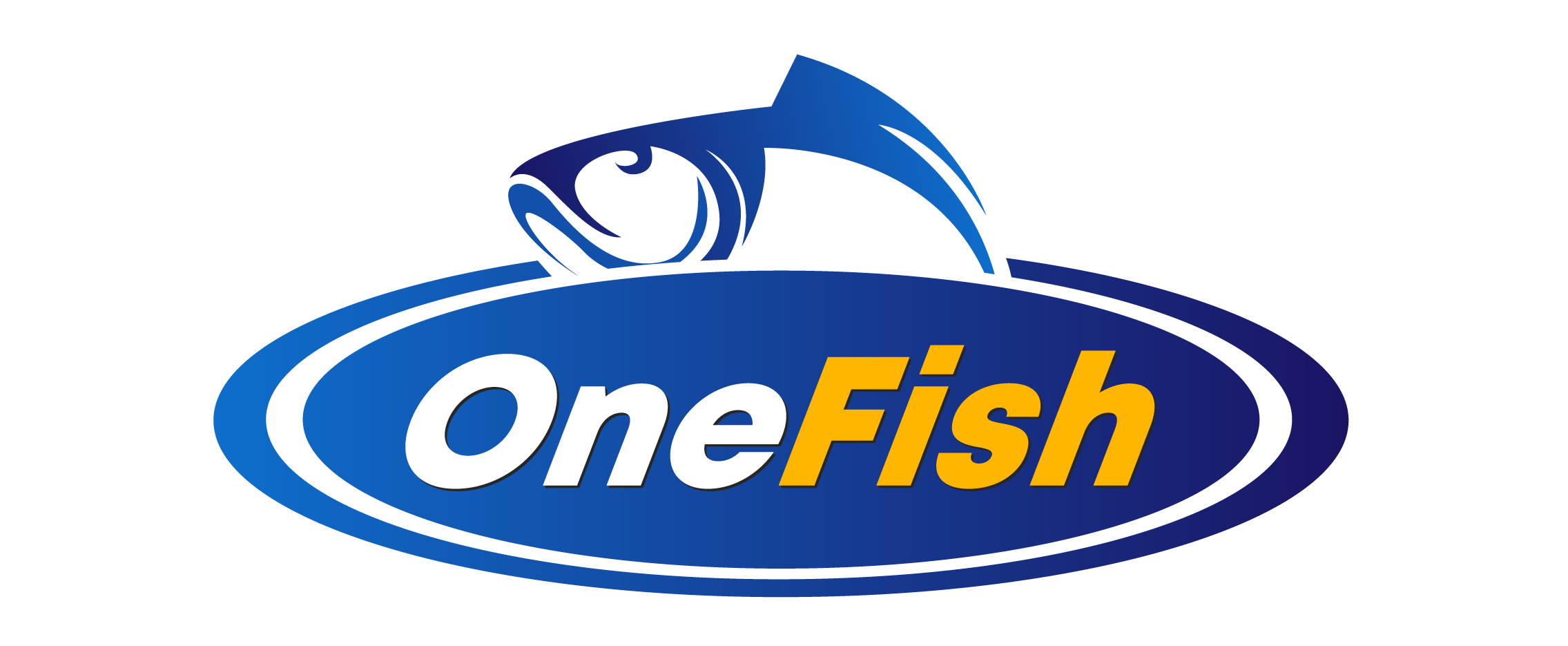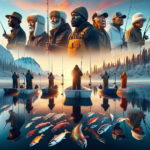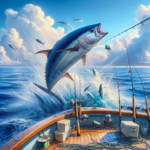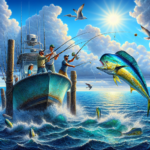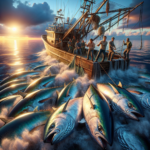Tarpon Fishing in Florida’s Atlantic Coast
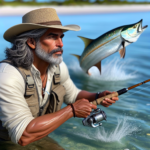
Introduction
Did you know that the Atlantic tarpon, often referred to as the “Silver King,” can grow up to 8 feet long and weigh over 280 pounds? This majestic fish is a prized catch for anglers along Florida’s Atlantic Coast, offering both a thrilling challenge and a rewarding experience. In this article, we will delve into the world of tarpon fishing on Florida’s Atlantic Coast, covering everything from the best fishing techniques and gear to the top fishing spots and seasonal considerations. Whether you’re a seasoned angler or a novice looking to try your hand at tarpon fishing, this guide will provide you with all the information you need to make your fishing trip a success.
Why does this matter? Tarpon fishing is not just a sport; it’s a cultural tradition in Florida. Understanding the best practices, locations, and techniques can significantly enhance your fishing experience, ensuring you make the most of your time on the water.
Background/Context
Historical or Cultural Significance
Tarpon fishing has a rich history in Florida, dating back to the late 19th century when the first tarpon was caught on rod and reel in 1885. This event marked the beginning of Florida’s reputation as a premier destination for sport fishing. Over the years, tarpon fishing has become an integral part of the local culture, attracting anglers from around the world.
Geographical Overview
Florida’s Atlantic Coast stretches from the Georgia border down to the Florida Keys, encompassing a diverse range of ecosystems, including estuaries, mangroves, and open ocean waters. The region’s warm climate and abundant marine life make it an ideal habitat for tarpon, particularly during their migration periods.
Key Points/Details
Fishing Techniques
Technique Overview
Several techniques are effective for tarpon fishing, including live bait fishing, fly fishing, and artificial lures. Each method has its own set of advantages and challenges.
When and Where to Use
Live bait fishing is often most effective in estuaries and nearshore waters, particularly during the early morning and late afternoon. Fly fishing is popular in shallow waters and during the tarpon’s migration season, typically from May to July. Artificial lures can be used year-round but are particularly effective in deeper waters.
Recommended Gear
- Rods: Medium to heavy-action rods, 7-9 feet in length.
- Reels: High-capacity spinning or baitcasting reels with a strong drag system.
- Lines: Braided lines with a 50-80 lb test strength.
- Bait/Lures: Live mullet, crabs, and shrimp for live bait; large streamers and poppers for fly fishing; and soft plastic swimbaits and jigs for artificial lures.
Species Information
Species Overview
The Atlantic tarpon (Megalops atlanticus) is known for its acrobatic leaps and powerful runs, making it a challenging and exciting catch. Tarpon are typically found in warm, shallow waters and are known to migrate along the coast in search of food and suitable spawning grounds.
Best Practices
To successfully catch tarpon, it’s essential to use strong, durable gear and to be patient. Tarpon are known for their strength and stamina, so be prepared for a long fight. It’s also crucial to handle the fish carefully if you plan to release it, as tarpon are a protected species in Florida.
Location Information
Top Fishing Spots
- Stuart: Known as the “Sailfish Capital of the World,” Stuart also offers excellent tarpon fishing, particularly in the St. Lucie River and along the beaches.
- Jupiter Inlet: A prime spot for tarpon fishing, especially during the summer months when the fish are migrating.
- Indian River Lagoon: This estuary system is a hotspot for tarpon, offering both inshore and nearshore fishing opportunities.
- Florida Keys: The Keys are renowned for their tarpon fishing, with numerous flats and channels providing ideal habitats.
Regulations and Licenses
Florida requires a saltwater fishing license for all anglers. Additionally, there are specific regulations for tarpon fishing, including a prohibition on harvesting tarpon over 40 inches unless you have a Tarpon Tag, which is primarily for record-seeking anglers. Catch and release is strongly encouraged to help preserve the species.
Seasonal Considerations
Seasonal Variations
Tarpon fishing conditions can vary significantly throughout the year. The peak season is typically from May to July, during the tarpon’s migration. However, tarpon can be found year-round in certain areas, particularly in the southern parts of the state.
Best Times to Fish
The best times to fish for tarpon are early morning and late afternoon when the fish are most active. Tides also play a crucial role, with incoming and outgoing tides often providing the best opportunities.
Events and Tournaments
Event Overview
Florida hosts several tarpon fishing tournaments, including the prestigious Golden Fly Invitational Tarpon Tournament in Islamorada and the Silver King Classic in Boca Grande. These events attract top anglers from around the world and offer significant prizes.
Preparation Tips
To prepare for a tournament, it’s essential to practice your casting and hooking techniques, ensure your gear is in top condition, and familiarize yourself with the tournament rules and regulations. Pre-fishing the tournament waters can also provide valuable insights.
Tips and Best Practices
General Tips
- Patience: Tarpon fishing requires patience and persistence. Be prepared for long waits and challenging fights.
- Observation: Pay attention to the water conditions, tides, and fish behavior to increase your chances of success.
- Conservation: Practice catch and release to help preserve the tarpon population for future generations.
Avoid Common Mistakes
- Using Inadequate Gear: Ensure your gear is strong enough to handle the powerful tarpon.
- Improper Handling: Handle tarpon carefully to avoid injuring the fish, especially if you plan to release it.
- Ignoring Tides: Tides play a crucial role in tarpon fishing. Plan your trips around the best tidal conditions.
Advanced Techniques
- Double Haul Casting: Mastering this fly fishing technique can help you cast further and more accurately.
- Using Drones: Some anglers use drones to spot schools of tarpon from above, providing a strategic advantage.
- Chumming: Chumming with live bait can attract tarpon to your fishing area, increasing your chances of a hookup.
Gear and Equipment Recommendations
Essential Gear
- Rods: Medium to heavy-action rods, 7-9 feet in length.
- Reels: High-capacity spinning or baitcasting reels with a strong drag system.
- Lines: Braided lines with a 50-80 lb test strength.
- Bait/Lures: Live mullet, crabs, and shrimp for live bait; large streamers and poppers for fly fishing; and soft plastic swimbaits and jigs for artificial lures.
Optional Gear/Upgrades
- Polarized Sunglasses: Helps reduce glare and spot fish more easily.
- Fishing Gloves: Protects your hands during long fights with tarpon.
- Fish Finder: Can help locate schools of tarpon in deeper waters.
Where to Buy or Rent
Local tackle shops in Florida, such as Bass Pro Shops, West Marine, and local bait and tackle stores, offer a wide range of gear. Online retailers like Amazon and TackleDirect also provide extensive selections. For rentals, check with local fishing charters and outfitters.
Safety and Conservation
Safety Tips
- Weather Considerations: Always check the weather forecast before heading out. Florida’s weather can change rapidly.
- Wildlife Hazards: Be aware of local wildlife, including alligators and sharks, which can pose risks.
- Hydration: Stay hydrated and protect yourself from the sun with appropriate clothing and sunscreen.
Conservation Practices
- Catch and Release: Practice catch and release to help preserve the tarpon population.
- Respect Local Wildlife: Avoid disturbing local wildlife and habitats.
- Follow Regulations: Adhere to local fishing regulations and guidelines to ensure sustainable fishing practices.
Planning Your Trip
Accommodations
There are numerous accommodation options along Florida’s Atlantic Coast, ranging from luxury resorts to budget-friendly motels. Popular choices include the Hutchinson Island Marriott Beach Resort in Stuart, the Jupiter Beach Resort & Spa, and various vacation rentals available through platforms like Airbnb and VRBO.
Travel Tips
Florida’s Atlantic Coast is easily accessible via major highways like I-95 and US-1. The region is also served by several airports, including Palm Beach International Airport (PBI) and Fort Lauderdale-Hollywood International Airport (FLL). Renting a car is recommended for exploring different fishing spots.
Additional Activities
In addition to fishing, the region offers a variety of activities, including boating, snorkeling, and visiting local attractions like the Kennedy Space Center and the historic city of St. Augustine. These activities make it an excellent destination for families and groups.
Frequently Asked Questions (FAQs)
What is the best time of year to fish for tarpon on Florida’s Atlantic Coast?
The peak season for tarpon fishing is typically from May to July, during their migration. However, tarpon can be found year-round in certain areas.
Do I need a special license to fish for tarpon in Florida?
Yes, you need a saltwater fishing license. Additionally, a Tarpon Tag is required if you plan to harvest a tarpon over 40 inches.
What is the best bait for tarpon fishing?
Live bait such as mullet, crabs, and shrimp are highly effective. Artificial lures like soft plastic swimbaits and jigs can also be successful.
Are there any specific regulations for tarpon fishing?
Yes, there are specific regulations, including catch and release practices and size limits. Always check the latest regulations before fishing.
Conclusion
Tarpon fishing on Florida’s Atlantic Coast offers an exhilarating experience for anglers of all skill levels. By understanding the best techniques, gear, and locations, you can significantly enhance your chances of success. Remember to practice conservation and safety measures to ensure a sustainable and enjoyable fishing experience. So grab your gear, head to the coast, and get ready to catch the Silver King!
Whether you’re planning your first tarpon fishing trip or looking to improve your skills, this guide provides all the information you need. Happy fishing!
